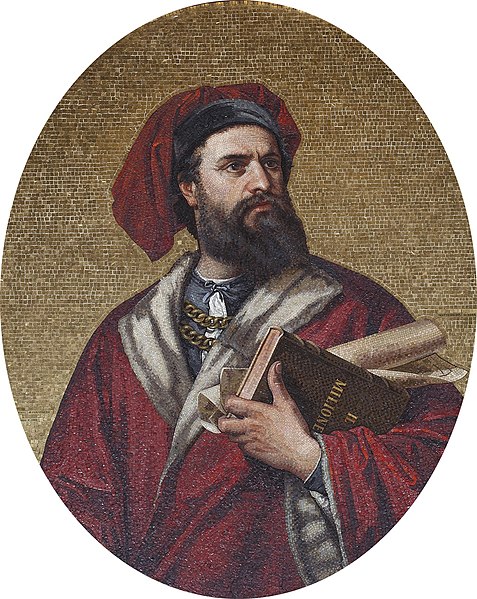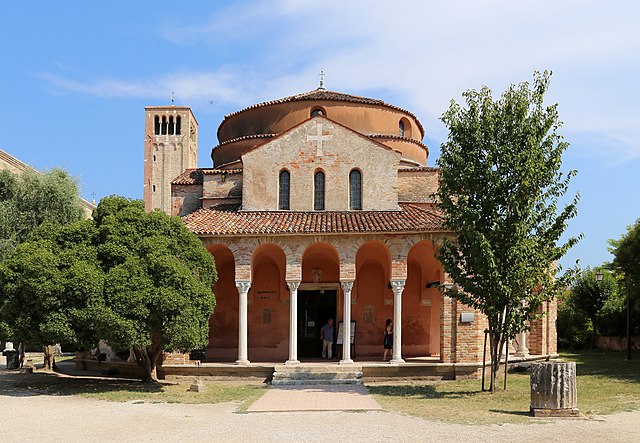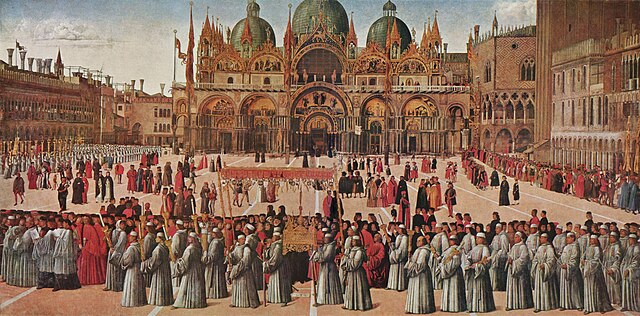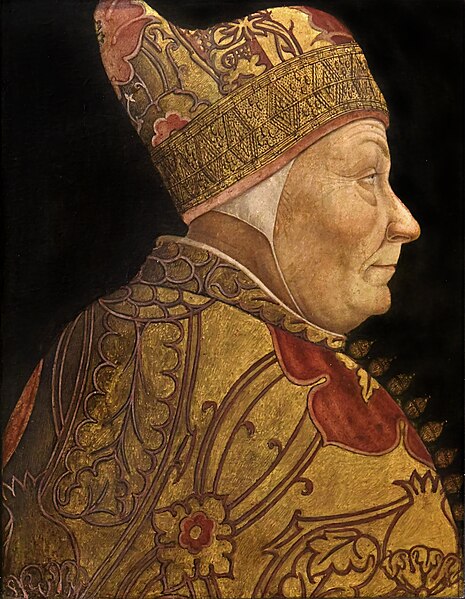Marco Polo was a Venetian merchant, explorer and writer who travelled through Asia along the Silk Road between 1271 and 1295. His travels are recorded in The Travels of Marco Polo, a book that described to Europeans the then-mysterious culture and inner workings of the Eastern world, including the wealth and great size of the Mongol Empire and China under the Yuan dynasty, giving their first comprehensive look into China, Persia, India, Japan, and other locations throughout Asia.
Polo wearing a Tartar outfit, print from the 18th century
Commemorative plaque on the site of Casa Polo in Venice, part of the Teatro Malibran which was built upon Polo's house
Corte Seconda del Milion, Venice, next to Polo's house, is named after the nickname of Polo, Il Milione
Mosaic of Marco Polo displayed in the Palazzo Doria-Tursi, Genoa, Italy
The Republic of Venice or Venetian Republic, traditionally known as La Serenissima, was a sovereign state and maritime republic in parts of the present-day Italian Republic, Istria and Dalmatia that existed for 1,100 years from 697 until 1797. Centered on the lagoon communities of the prosperous city of Venice, it incorporated numerous overseas possessions in modern Croatia, Slovenia, Montenegro, Greece, Albania and Cyprus. The republic grew into a trading power during the Middle Ages and strengthened this position during the Renaissance. Most citizens spoke the Venetian language, although publishing in Italian became the norm during the Renaissance.
The Church of Santa Maria Assunta, on the island of Torcello, was the main place of worship in the Venetian Lagoon between the 7th and 9th centuries.
The church of Santa Fosca, built in the 12th century, is an example of Byzantine influence in Venetian culture.
Painting by Gentile Bellini depicting St Mark's Square in the 1490s
Francesco Foscari was the 65th Doge of the Republic of Venice from 1423 to 1457








